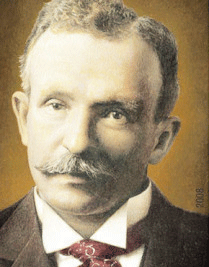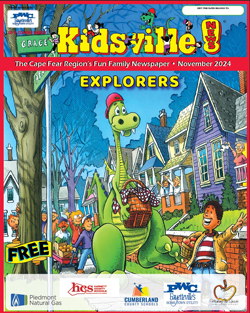 With the celebration of Black History Month throughout February, Professor Charles Anderson of Methodist University will share the contributions of African-Americans throughout Fayetteville’s history on Feb. 23, at 2 p.m. at the Museum of the Cape Fear. Professor Anderson is an adjunct faculty member at Methodist University and was an adjunct faculty member on the Fort Bragg campus of Central Texas College.
With the celebration of Black History Month throughout February, Professor Charles Anderson of Methodist University will share the contributions of African-Americans throughout Fayetteville’s history on Feb. 23, at 2 p.m. at the Museum of the Cape Fear. Professor Anderson is an adjunct faculty member at Methodist University and was an adjunct faculty member on the Fort Bragg campus of Central Texas College.
“The history of the African-American in Fayetteville begins in 1754 when the fi rst black was recorded on the tax rolls. Over the last 250 years, the African-American has been essential in weaving the fabric of Fayetteville,” said Anderson.
The presentation will highlight E.E. Smith, Charles Chesnutt and Lewis Leary among others. E.E. Smith was born into slavery in 1852. He availed himself of educational opportunities and was able to study in public schools and eventually became a teacher at the age of 22. He graduated from Shaw University in 1878 and was licensed to preach. In 1883, at the age of 36 he became the principal of the State Colored Normal School in Fayetteville. He was also Secretary to the State Colored Baptist Convention, commissioned as a Major in the North Carolina Guard and in 1888 he was appointed United States Minister and Consul-General to Liberia. He was a multi-talented man who excelled in all aspects of life.
“The adage of ‘a thousand mile journey begins with a single step’ is apropos. From being sold in the marketplace to occupying the White House indicates the strides African-Americans have made. My vision is we get away from color and get to people. A contribution to the well-being of mankind is colorless,” said Anderson.
Charles Chestnutt is best known for his novels and short stories exploring the myriad issues of racial identity in the post-Civil War South. His parents, both “free persons of color,” were from Fayetteville and moved to Ohio. He had white ancestry and was able to “pass” but elected not to. When Chestnutt was 9-years-old, the family moved back to Fayetteville and at 13 he became a pupil-teacher at the Howard School. He subsequently became an assistant principal at what was to become Fayetteville State University. He was a prolifi c writer whose books focused on the post Civil War South. He was a realist, and on occasion he challenged the status quo. While well-respected by his literary peers, novels he had penned failed to generate sales. In 1901, he became more politically active and joined the newly founded National Association for the Advancement of Colored People and became one of the 20th century’s most prominent activists and social commentators.
“We have made strides but there is a distance to go. I fi rmly believe we are slowly but steadily moving towards ‘we the people.’ Moving towards Dr. King’s hope that ‘no longer will a man be judged by the color of his skin.’ Moving towards Rodney King’s plea of ‘Why can’t we get along?’ In history, there is an underlying message of hope and that is what I wish to share,” Anderson explained.
Lewis Leary was born in Fayetteville, N.C. in 1835. He lived a short but full life. At the age of 22, he moved to Oberlin, Ohio, and married. He became involved in the abolitionist movement the next year and eventually joined John Brown’s ill-fated attack on the Federal Arsenal in Harpers Ferry, W.V. He was shot and survived long enough to get a message to his wife, who did not know he was participating in the raid. Leary passed away at the age of 24. He was a man of deep principle and hope.
“There are many others of note who are part of the African-American history in Fayetteville. Isaac Hammond was a member of the Light Infantry in the Revolutionary War. Henry Evans was the pastor of the fi rst black church in the area. Many of the stones, bricks and mortar in the Market House were laid by a black master brick mason. Fayetteville has a rich history and I am excited about the direction we as a city have and where we as a people are headed,” said Anderson.
For more information, please visit www.nccultervents.com or call 910-486-1330.
Photo: Charles Chesnutt

 How to resolve AdBlock issue?
How to resolve AdBlock issue? 








